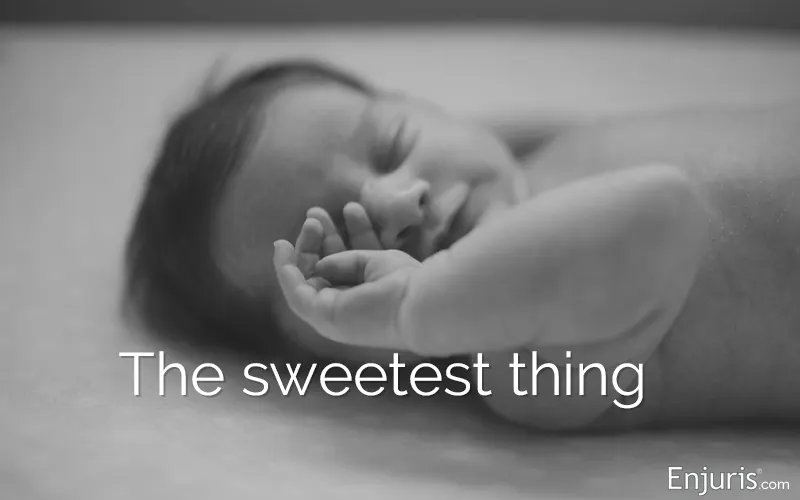
There are few things on which a majority of parents would agree. Everyone has lots of opinions when it comes to raising children, and whatever you do, someone will say you’re doing it wrong.
But there’s 1 thing nearly everyone can agree on: Every parent’s worst heartbreak is seeing their child in pain or suffering. Sadly, a parent of a child who has experienced a birth injury might see pain and suffering every single day of that child’s life—but with every study and bit of research that’s performed, we learn more about how to help babies with birth injuries lead full and happy lives.
A recent study by the University of California, San Francisco (UCSF) indicated that the timing of a birth injury could impact a baby’s motor and language skills as they get older.
UCSF birth injury study
The study, which was published in January 2022, used a process called diffusion MRI to visualize the brain wiring of newborns. One set of newborns had congenital heart defects (CHD), and the other had birth asphyxia, also called hypoxic-ischemic encephalopathy (HIE).
Babies with HIE might suffer brain injury and oxygen deprivation for days or hours leading up to birth, or they might occur during the process of labor and delivery. There are several causes of HIE, some related to the parent’s medical condition and personal risk factors, and others that could be related to accidents that happen during labor and delivery.
You can read more about HIE here: https://www.enjuris.com/birth-injury-types/hie-hypoxia/
By contrast, CHD is a condition that deprives a baby of oxygen in utero, which means it could last for weeks or months before birth.
Babies with HIE and CHD are at risk for neurodevelopmental disabilities, including learning disabilities and issues with motor skills or behavior.
Study findings
After researching the brain function of these babies, researchers found that whether the babies experienced HIE or CHD affected their outcomes and disabilities. In other words, although HIE and CHD are both characterized by shortages of oxygen to the brain, when the brain was deprived of oxygen is a major factor in how the child develops later.
The CHD newborns in the study performed worse on language function at 12 to 18 months old and had worse cognitive, language and motor function at 30 months than the babies with HIE. “Global efficiency” measures the ease with which the brain makes a connection from 1 area to another. One of the researchers made an analogy with traffic flow—If the brain has high efficiency, the highways and roads are balanced so the driver can move freely and get to their destination quickly. The babies with CHD fared worse in the study than the HIE babies for global efficiency.
What does this mean for babies with birth injuries?
We don’t know yet. The study is very new, but it could be very helpful information for parents and doctors to properly and effectively provide the correct treatment for a baby affected by a loss of oxygen to the brain during pregnancy or birth.
What we do know is this: A birth injury is different from a birth defect. While the result for your baby might be the same, the distinction matters because it affects whether or not you might be able to recover some compensation through a medical malpractice lawsuit.
CHD, for example, could be a birth defect. A birth defect is the result of your child’s DNA, or it could be related to a medical condition the parent experienced during pregnancy. There’s nothing a parent or doctor can do to prevent a genetic defect, although it can sometimes be diagnosed and treated prior to birth. In most cases, this would not be considered malpractice because the doctor could not have prevented the condition.
However, it could become malpractice if the doctor failed to detect the condition and if detection would have allowed for early treatment that could have prevented a negative outcome for the baby.
You can read more about the difference between a birth defect and a birth injury here: https://www.enjuris.com/birth-injury-types/birth-defect-vs-birth-injury/
By contrast, HIE can be caused by an injury that happens during the birth process. There are some prenatal risk factors that would increase the likelihood of HIE before birth:
- Placenta problems
- Preeclampsia
- Maternal diabetes with vascular disease
- Fetal infections
- Drug or alcohol use during pregnancy
- Fetal anemia
- Heart disease
- Lung malformations
There are also causes of HIE that happen during labor and delivery, such as:
- Umbilical cord problems
- Placenta abruption or uterus rupture
- Excessive bleeding from the placenta
- Prolonged late-stage labor
- Abnormal fetal position (including breech, or feet first)
- Low blood pressure in pregnant person
- Trauma to brain or skull
These issues can be caused by mistakes made by the doctor or hospital staff during birth, or they could happen on their own, but it’s the doctor’s role to alleviate them. For instance, a baby’s heart rate should be monitored electronically throughout the labor and delivery process. If there are heart rate irregularities, that could be an indicator of HIE or other problems, and the doctor should respond accordingly.
Likewise, if the baby is in a position that would not be safe for a vaginal delivery, the doctor should perform a Cesarean section (c-section) instead. If the doctor fails to recognize a problem and take corrective action, and if that failure causes an injury to the parent or child, it could rise to the level of medical malpractice.
Diagnosing a birth injury
There are a few ways that a birth injury could be diagnosed. One way is by performing an Apgar test. Every baby born in a U.S. hospital or birthing facility is given a test 1 minute after birth. This test is usually repeated 5 minutes after birth, especially if the newborn gets a low score on the 1st test.
The test looks at criteria like their skin color, heart rate, reflexes, muscle tone and respiration.
A low Apgar test score could indicate a birth injury or other condition. By correctly assessing the results of an Apgar test, a medical team can work quickly to prevent further damage if injury has already occurred.
However, we know from the recent study that some diagnoses associated with HIE and CHD are related to symptoms that occur later in a child’s development—not immediately at birth.
Is your baby a victim of medical malpractice?
If your baby suffered injuries because of HIE, CHD or other complications and you suspect medical malpractice, the 1st step is to get a diagnosis by a physician other than the medical team that delivered the baby or oversaw your medical care during pregnancy.
You need an unbiased judgment about whether the baby’s condition is potentially the result of a doctor or other provider’s negligence. If the “2nd opinion doctor” believes there was medical malpractice, you should seek the guidance of an experienced birth injury lawyer.
These are complicated cases, and the primary issues will be proving that your baby’s developmental delays or other conditions are linked to a birth injury and that the injury could have been avoided with appropriate medical care.
The Brown Trial Firm handles cases like these every day. That’s not to say that we have a cookie-cutter approach—on the contrary; we thoroughly evaluate every prospective client who reaches out to our firm, and we will work as hard as possible to get you the compensation you need for your family.
Meconium Aspiration Syndrome and Medical Malpractice
Your baby suffered Meconium Aspiration Syndrome during delivery. Is it medical malpractice?


